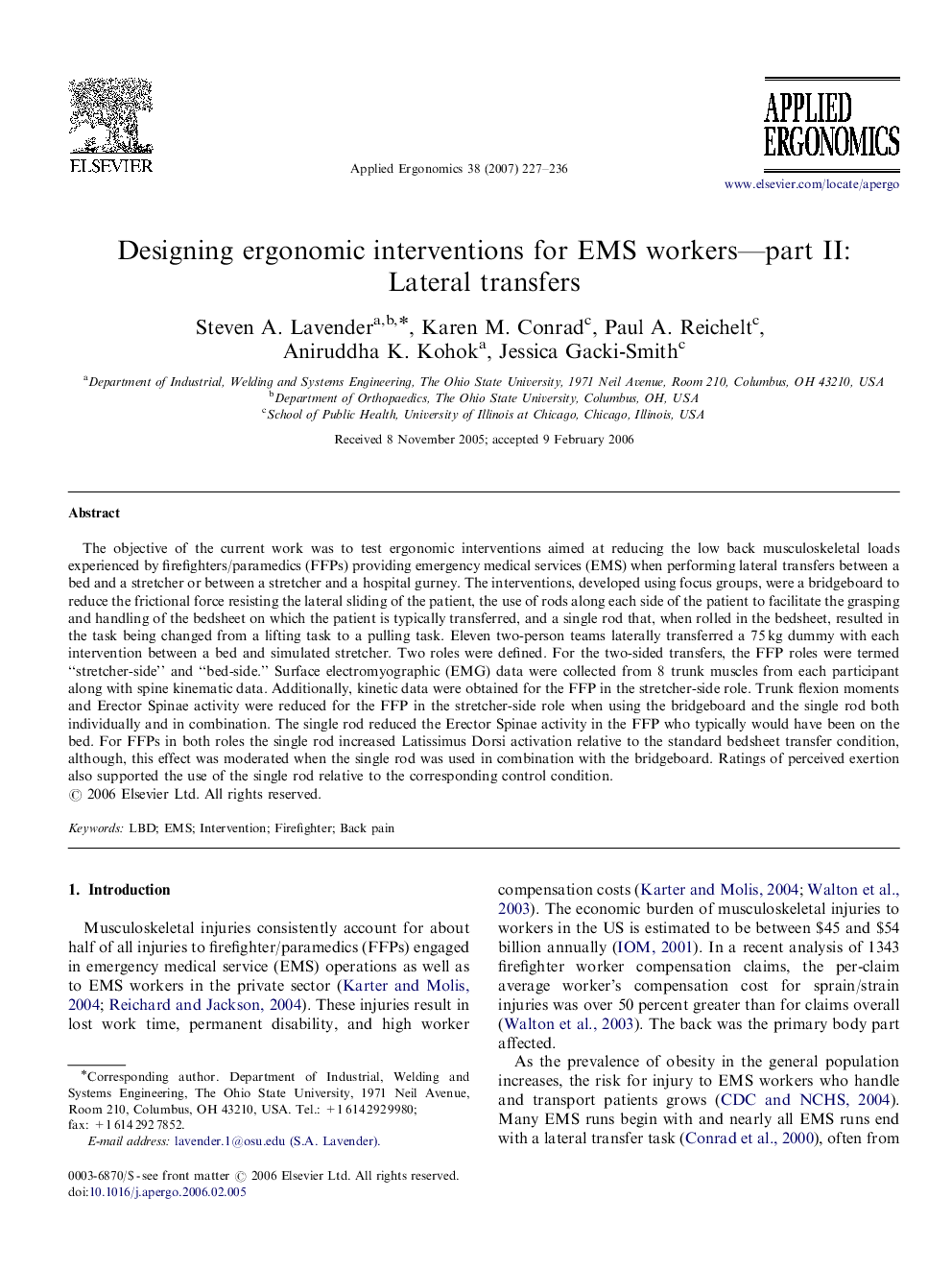| کد مقاله | کد نشریه | سال انتشار | مقاله انگلیسی | نسخه تمام متن |
|---|---|---|---|---|
| 551483 | 872856 | 2007 | 10 صفحه PDF | دانلود رایگان |

The objective of the current work was to test ergonomic interventions aimed at reducing the low back musculoskeletal loads experienced by firefighters/paramedics (FFPs) providing emergency medical services (EMS) when performing lateral transfers between a bed and a stretcher or between a stretcher and a hospital gurney. The interventions, developed using focus groups, were a bridgeboard to reduce the frictional force resisting the lateral sliding of the patient, the use of rods along each side of the patient to facilitate the grasping and handling of the bedsheet on which the patient is typically transferred, and a single rod that, when rolled in the bedsheet, resulted in the task being changed from a lifting task to a pulling task. Eleven two-person teams laterally transferred a 75 kg dummy with each intervention between a bed and simulated stretcher. Two roles were defined. For the two-sided transfers, the FFP roles were termed “stretcher-side” and “bed-side.” Surface electromyographic (EMG) data were collected from 8 trunk muscles from each participant along with spine kinematic data. Additionally, kinetic data were obtained for the FFP in the stretcher-side role. Trunk flexion moments and Erector Spinae activity were reduced for the FFP in the stretcher-side role when using the bridgeboard and the single rod both individually and in combination. The single rod reduced the Erector Spinae activity in the FFP who typically would have been on the bed. For FFPs in both roles the single rod increased Latissimus Dorsi activation relative to the standard bedsheet transfer condition, although, this effect was moderated when the single rod was used in combination with the bridgeboard. Ratings of perceived exertion also supported the use of the single rod relative to the corresponding control condition.
Journal: Applied Ergonomics - Volume 38, Issue 2, March 2007, Pages 227–236